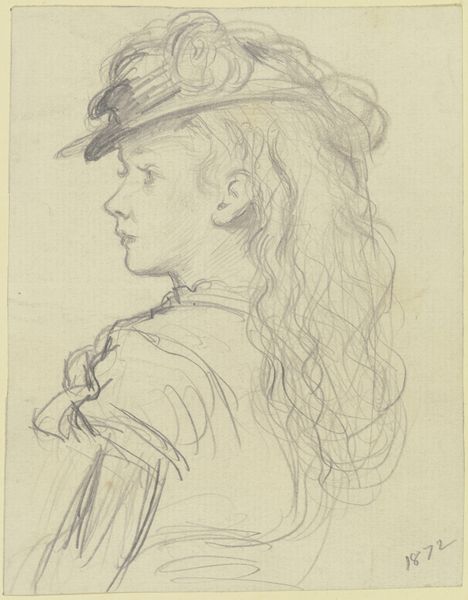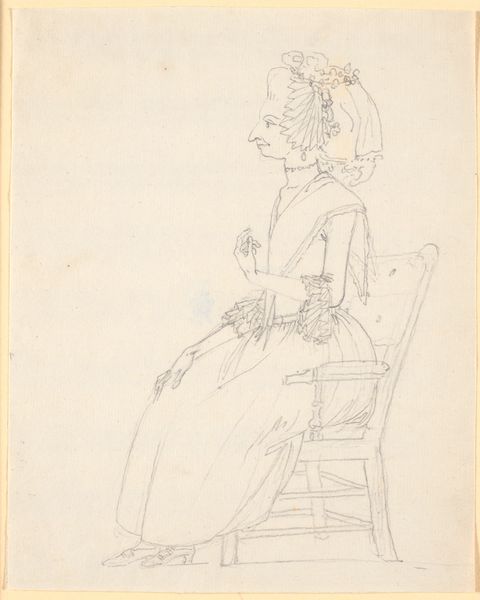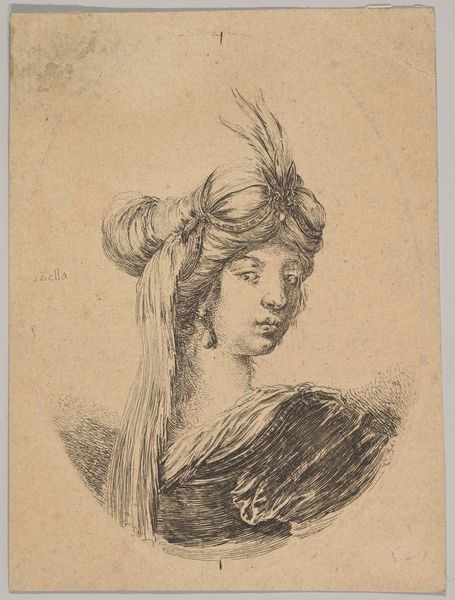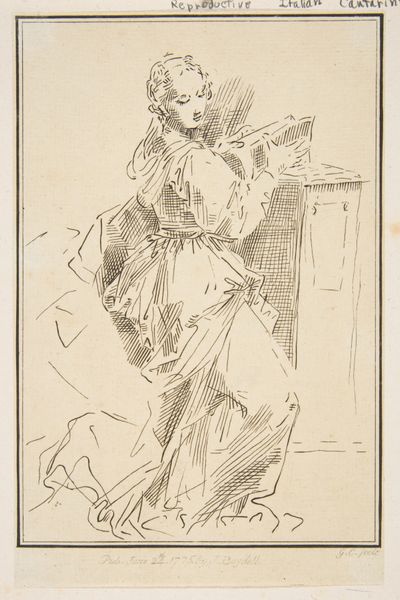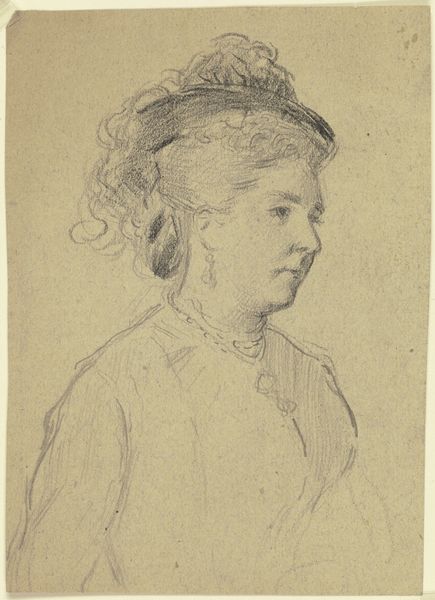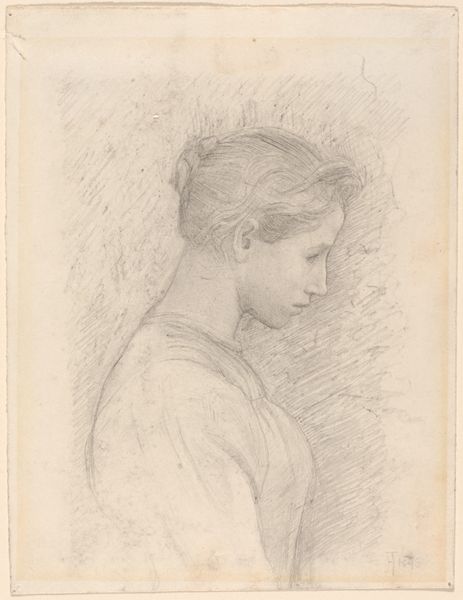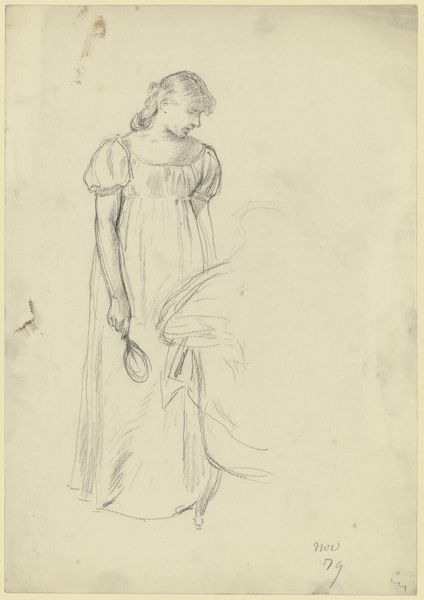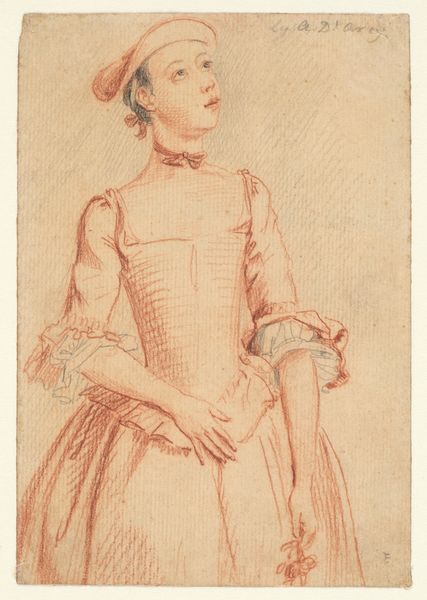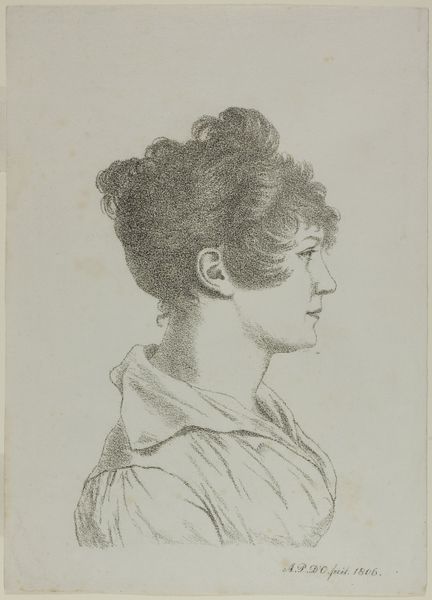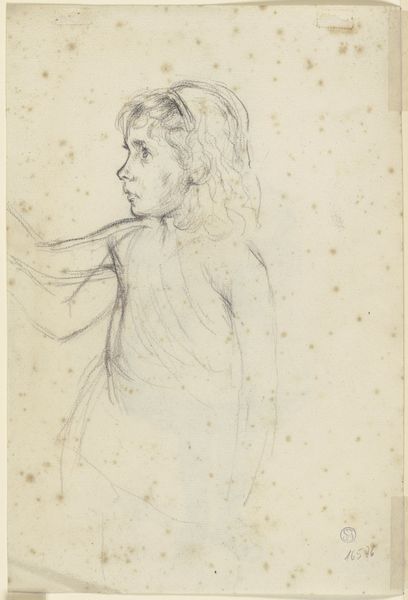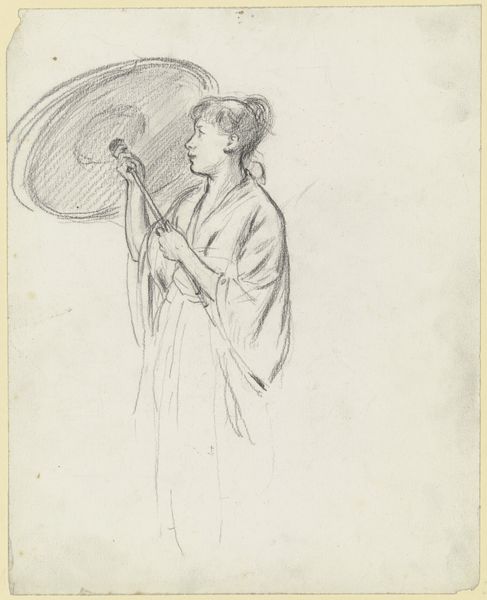
Profilportræt af malerens anden hustru Juliane Marie Abildgaard, f. Ottesen. Forarbejde til portræt i Frederiksborgmuseet 1798 - 1801
0:00
0:00
drawing, pencil
#
portrait
#
drawing
#
neoclacissism
#
figuration
#
pencil
Dimensions: 202 mm (height) x 178 mm (width) (bladmaal)
Curator: This delicate drawing is entitled "Profile Portrait of the Painter's Second Wife, Juliane Marie Abildgaard, née Ottesen," created between 1798 and 1801 by Nicolai Abildgaard. It's a preparatory study for a portrait held at Frederiksborg Museum, rendered in pencil. Editor: There's an immediacy about this work. It feels very intimate, almost as though we're peering into a private moment. The soft pencil strokes and the simple composition focus our attention entirely on the sitter's face and form. Curator: It's Neoclassical in its restraint and emphasis on line. Abildgaard was a leading figure in the Danish Neoclassical movement. Notice how he uses shading to create depth but avoids any overly dramatic or Baroque flair. This isn’t just a likeness; it embodies ideals of beauty and intellect popular at the time. Editor: That neoclassical sensibility comes through, especially given societal context. I'm particularly drawn to the head covering. Is that a turban or a headscarf? And what might it symbolize for women’s position during this period, thinking about self-expression versus adherence to prescribed roles? It gives me pause in considering constraints placed on women of the era. Curator: The head covering serves several purposes, both practical and symbolic. It certainly would have been fashionable at the time, signaling status, but consider too its use in portraiture as an echo to the classical sculptures and the veiled statues of antiquity. Abildgaard would have wanted that visual reference for someone in his circle. Editor: It sparks interesting thoughts on how clothing acts as a kind of visual shorthand, representing not only personal identity but social identity too. Looking again, she is staring ahead, with very precise yet simple line strokes to denote her face, very matter of fact without an artificial flair. This is intriguing, if, indeed, there is meaning layered into the drawing’s realism. Curator: Absolutely, and Abildgaard’s decision to create this portrait as a preparatory sketch allows us to appreciate the artist’s process and the evolving image he’s crafting of his wife. It connects us in some way to the initial creative inspiration and offers an authentic visual testament to this period. Editor: I appreciate your insight, seeing how preparatory sketches open avenues into understanding representations of women through this lens. They seem very deliberate, intentional. Curator: Exactly, thank you. It has given me fresh thoughts, too, for understanding the artist through an object seemingly minimal in its materiality and style.
Comments
statensmuseumforkunst almost 2 years ago
⋮
The blackened back of a drawing indicates that the artist wanted to transfer the motif - or part of it - to another medium. This is a well-known, simple technique. The back of the drawing is blackened with a layer of dark rubbing colour, usually black chalk or charcoal. The outline of the motif is then traced with a blunt stylus, transferring it to the material beneath. This method of tracing is often used to make print designs. The technique is only faintly visible on the front of Abildgaard’s drawings, but on the back the blackening is obvious, and the marked outline stands out clearly. Abildgaard’s drawing with the lanterna magica was used as design for a book illustration using tracing on a metal printing plate. In the other example, the profile portrait was transferred to a piece of paper, providing the basis for a drawing.
Join the conversation
Join millions of artists and users on Artera today and experience the ultimate creative platform.
